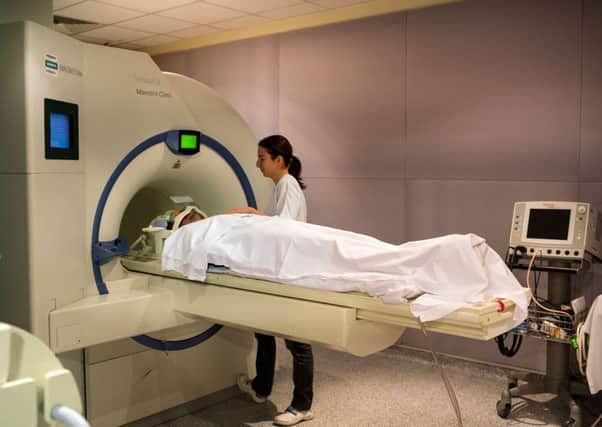Scientists use MRI scans to find ‘brown fat’


Brown fat has become a key target for researchers due to its ability to burn calories, as opposed to white fat which is linked to weight gain.
Now a team have used MRI technology to pinpoint areas of brown fat in a living adult for the first time. It is thought this could be an essential step in the fight against rising rates of diabetes and obesity.
Advertisement
Hide AdAdvertisement
Hide AdThe researchers, from Warwick Medical School and University Hospitals Coventry and Warwickshire NHS Trust, were able to identify the brown fat tissue, which showed up as green in the MRI scans.
Understanding brown fat and how it can be used is of growing interest to scientists trying to help those at high risk of developing potentially serious illnesses linked to their weight.
Dr Thomas Barber, from the department of metabolic and vascular health at Warwick Medical School, said: “This is an exciting area of study that requires further research and discovery.
“The potential is there for us to develop safe and effective ways of activating this brown fat to promote weight loss and increase energy expenditure, but we need more data to be able to get to that point. This particular ‘proof of concept’ is key, as it allows us to pursue MRI techniques in future assessments.”
The research, published in the Journal of Clinical Endocrinology and Metabolism, outlines the benefits of using MRI scans over positron emission tomography (Pet) scans.
Pet scans are able to show brown fat activity in the body, but the success of this method is limited as changing temperatures affect images produced.
MRI scans can show brown fat whether it is active or not, something researchers said could provide insight into where it can be found in the adult body.
This information could prove vital in the creation of future therapies that seek to activate deposits of brown fat at different points in the body.
Advertisement
Hide AdAdvertisement
Hide AdDr Barber said: “The MRI allows us to distinguish between the brown fat and the more well-known white fat due to the different water-to-fat ratio of the two tissue types. We can use the scans to highlight what we term ‘regions of interest’ that can help us to build a picture of where the brown fat is located.”
In Scotland, one in four adults is considered obese, along with 14 per cent of girls and 20 per cent of boys – one of the highest rates of obesity in the world. It has been estimated that the cost to the country of obesity is around £500 million.
Tam Fry, from the National Obesity Forum and Child Growth Foundation, welcomed the research, saying: “The good thing about brown fat is that it actually eats up fat and decreases obesity. This area of research is still in its infancy but is certainly worth pursuing. People had previously assumed brown fat was baby fat that went away.”